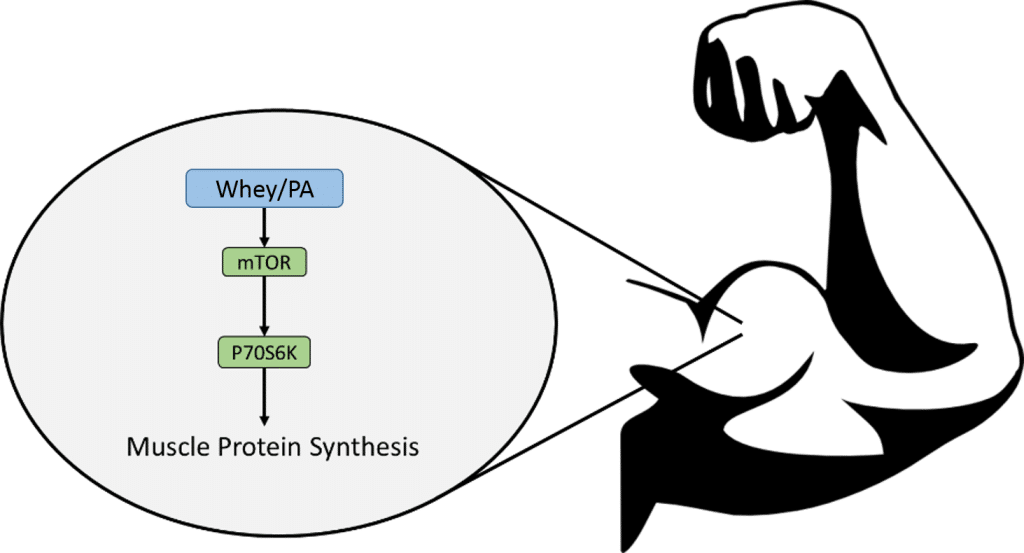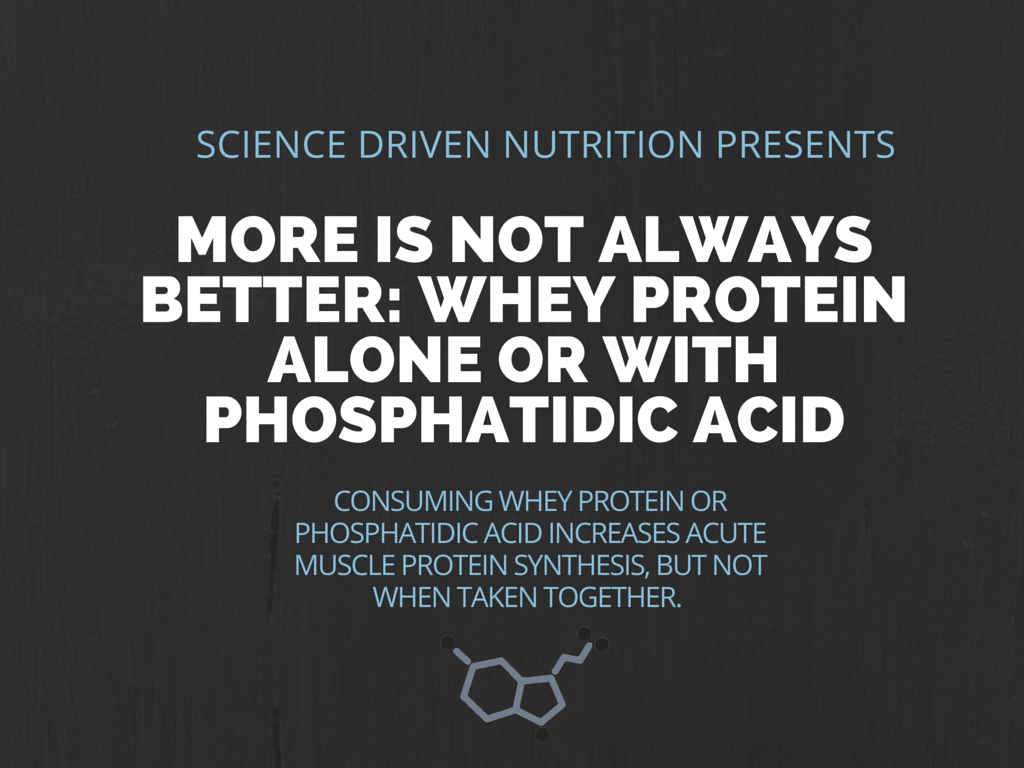There is a mentality that more is better when it comes to muscle growth. More training, more food, more supplementation. Specifically, people will often take multiple supplements that are “designed” to elicit muscle growth, assuming they will have additive effects.
Two supplements that are regarded to have anabolic effects on muscle tissue are whey protein (WP) and phosphatidic acid (PA). While whey protein is well known by the public, PA is less well known.
PA acts as a signaling molecule and is believed to augment muscle protein synthesis through the mTOR pathway, which whey protein has also been shown to activate. Thus maybe taking both PA and WP may increase muscle protein synthesis and muscle gain more than taking only one!

Let’s see what a recent research study says about this
Mobley and his fellow scientists conducted a study to examine whether supplementation PA, WP, or both would elicit the greatest muscle protein synthesis in rats.
The Subjects
Taking the leg off a human being is generally frowned upon so the authors used male rats. They assigned the rats to one of 4 groups: 1) whey protein, 2) phosphatidic acid, 3) both whey and phosphatidic acid, 4) control.
Animal Intervention
The rats were fasted for 18 hours before they were administered one of the following:
- 1 ml of water
- a human equivalent dose of 1.5g PA
- a human equivalent dose of 10g WP.
- a human equivalent dose of 1.5g PA and 10g WP
The animals were then sacrificed and their gastrocnemius (aka calf muscle) was excised and used for analysis.
Cell Based Studies
The authors wanted to verify their findings in a different model so they used a C2C12 myoblasts which are essentially mouse muscle cells. One thing to note is I don’t believe they differentiated them into myocyte which are more close to actual muscle cells. Now I don’t believe this drastically changes the results but it is something to note.
Stats Baby!
The data from animal studies were analyzed using a ANOVA with LSD post hoc comparisons. The cell culture studies used independent sample t-tests.
The Data
The animal studies showed some interesting results, so we can break those down first
mTOR activity
The mammalian target of rapamycin (mTOR) is a contributor to muscle cell growth. The protein p70s6K acts downstream of that to induce muscle protein synthesis.
The authors showed that PA and WP both increase activity of these two proteins and that combined they also increase their activity.
Interestingly, activity of 4EBP-1, a protein directly involved in turned genes into proteins was decreased in the PA and in the WP+PA group, suggesting PA somehow decreases protein translation.
Muscle Protein Synthesis
Signaling molecules are one thing, but actual synthesis of new proteins is another. It appears that PA and WPC alone increase muscle protein synthesis, but when you combine them together, they do not increase muscle protein synthesis*
Image C/O Mobley et al. Journal of the International Society of Sports Nutrition 2015 12:32 doi:10.1186/s12970-015-0094-7
*Now the difference between the control and PA did no reach statistical significance so make sure to note that
Cell Studies
Given the difficult nature of using whey protein in cell culture models the authors only exposed the cells to PA. The cell studies confirmed the animal studies demonstrating that PA does indeed increased mTOR signaling (specifically the activitly of p70s6k) and muscle protein synthesis! Th
The Wrap Up
We often think that more is better. This study shows that might not be the case. Phosphatidic Acid and Whey Protein are two, seemingly synergistic supplements that should work together to augment muscle growth. In this first study in animals, PA or WP induce muscle protein synthesis but when they were combined the effects was dampened.
This is only demonstrating acute muscle protein synthesis in rats. And as we know, muscle protein synthesis is not a great indicator of long term muscle growth. Clearly a lot more work needs to be done but it looks like more may not always better!
Based on this single observation, both whey protein and phosphatidic acid may be beneficial for muscle growth, yet taking them together may offset the benefit of the other. This gives us something to think about when we look at our supplementation.


